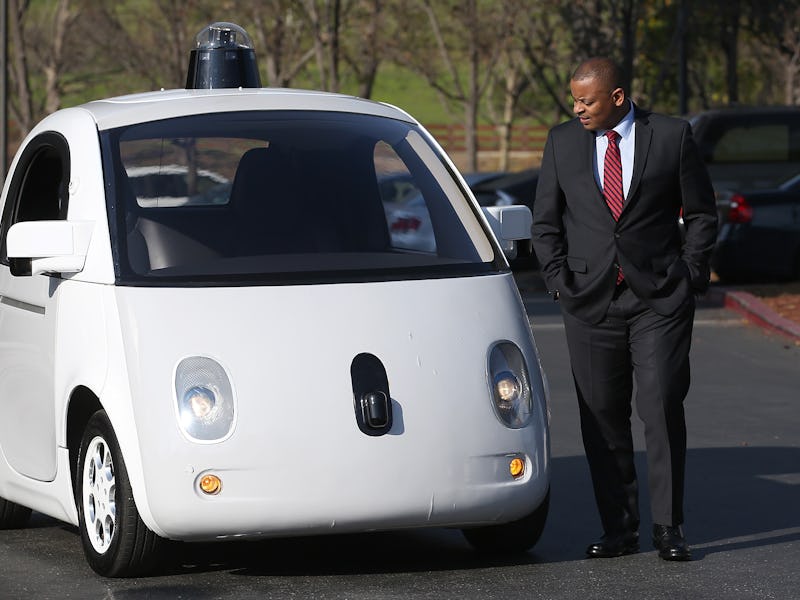Google Reveals Why It Made Its Cars Completely Driverless: We Don't Pay Attention
Early testers took too long to regain enough attention to drive at highway speeds.

In the October report on its driverless car project, Google offers this insight into how its car went completely driverless.
Basically: “People didn’t pay attention like they should have.”
Back in the autumn of 2012, Google was comfortable enough with its automated driving tech that it allowed employees to test it out on modified Lexuses. They’d only have to actually drive the SUVs until they merged onto a freeway and from there, the self-driving feature would take control. But since it was still a nascent technology, the testers had to be ready at any moment to regain control from the computer. In this way, it was slightly similar to Tesla’s Autopilot feature that debuted recently: You still have to pay very close attention.
Apparently Google’s own employees didn’t take the caution very seriously:
“People didn’t pay attention like they should have. We saw some silly behavior, including someone who turned around and searched the back seat for his laptop to charge his phone — while traveling 65mph down the freeway! We saw human nature at work: People trust technology very quickly once they see it works. As a result, it’s difficult for them to dip in and out of the task of driving when they are encouraged to switch off and relax.”
The October report cites several papers supporting Google’s findings that people should not be expected to switch between relaxing and driving. The Virginia Tech Transportation Institute, for example, found drivers need five to eight seconds to regain manual control of a semi-automated system. Five to eight seconds is a legitimately long time while driving. It could be the difference between an accident and business as usual. (An unrelated study recently found it takes 27 seconds to regain attention after looking at one’s smart phone.)
Soon, we could see more of these cars on the road like this driver did last week in Palo Alto:
Since September, Google’s 48 vehicles (23 Lexus RX450h SUVs and 25 automated car prototypes) have logged 57,432 miles in autonomous mode, bringing the grand total to 1,268,108 miles. They’ve also covered 27,369 more miles in manual mode (that is, normal driving), bringing the new total to 938,621 miles. In that time, no new traffic accidents were reported to the California Department of Motor Vehicles.
Transportation Secretary Anthony Foxx Discusses Future Transportation Trends With Google CEO.
See Also: What Will Happen When You Fall Asleep At the Wheel of Your Driverless Car?